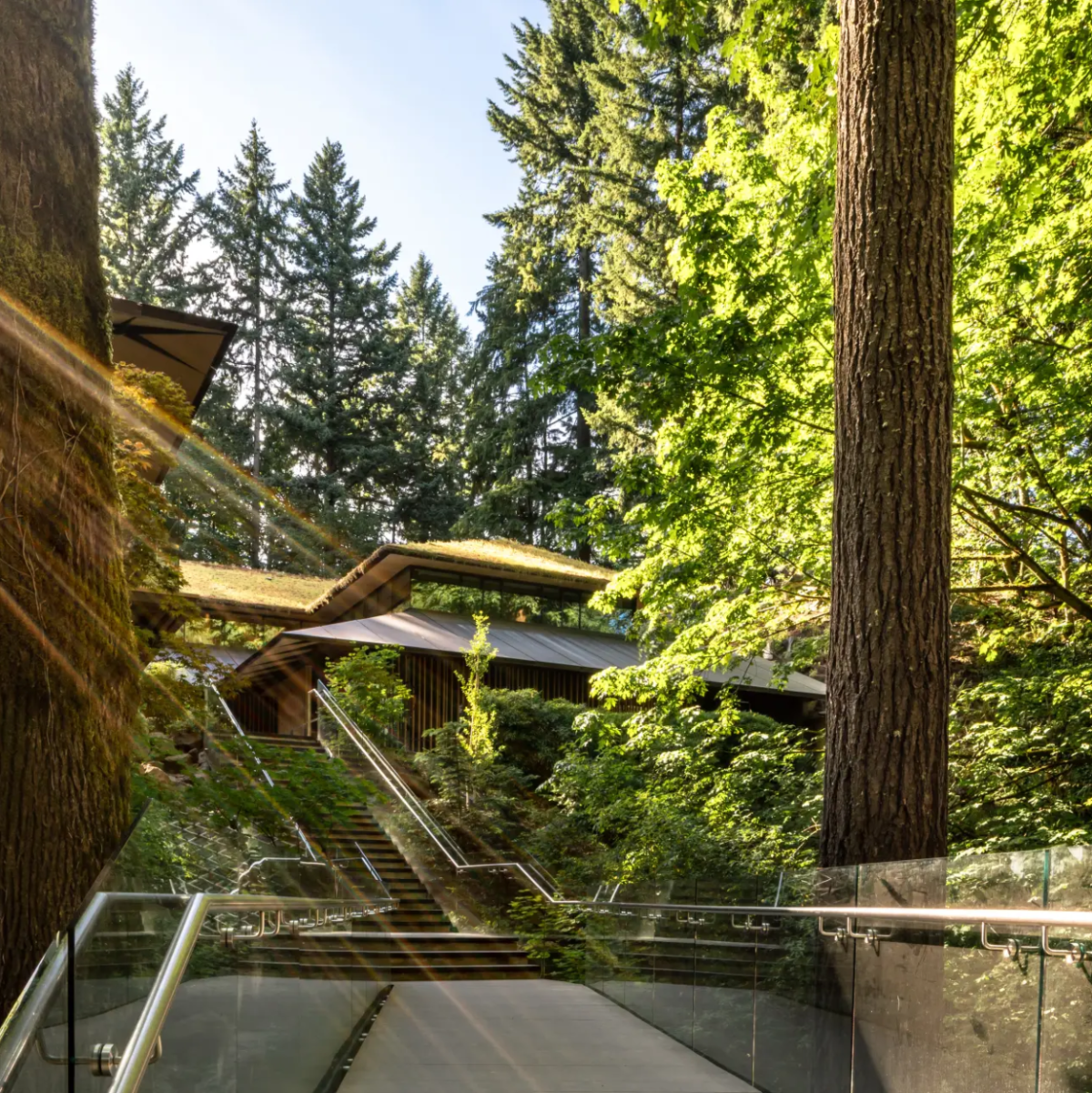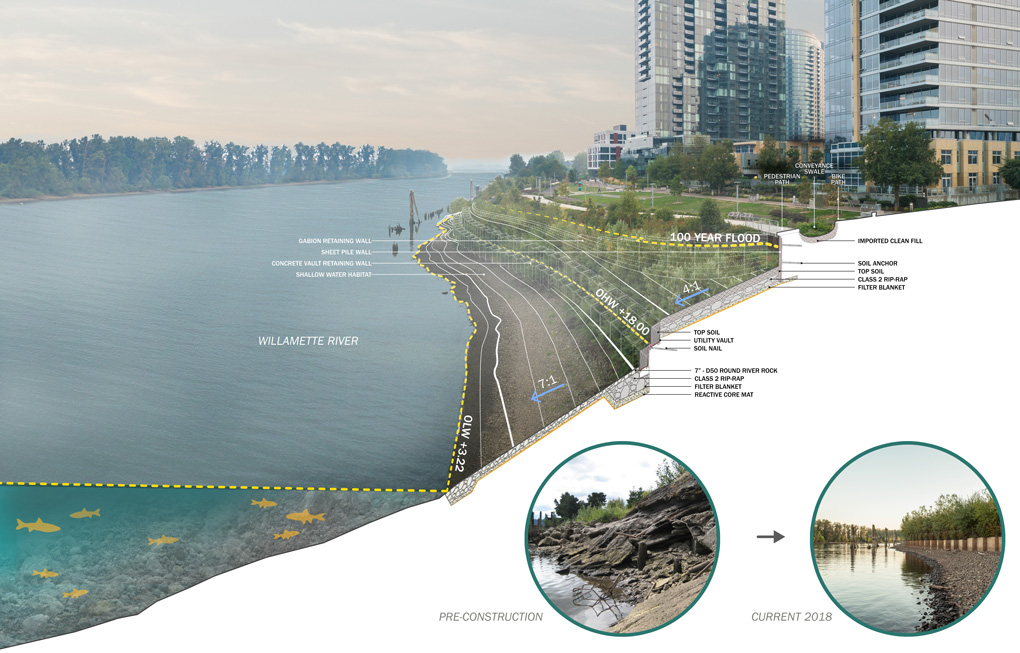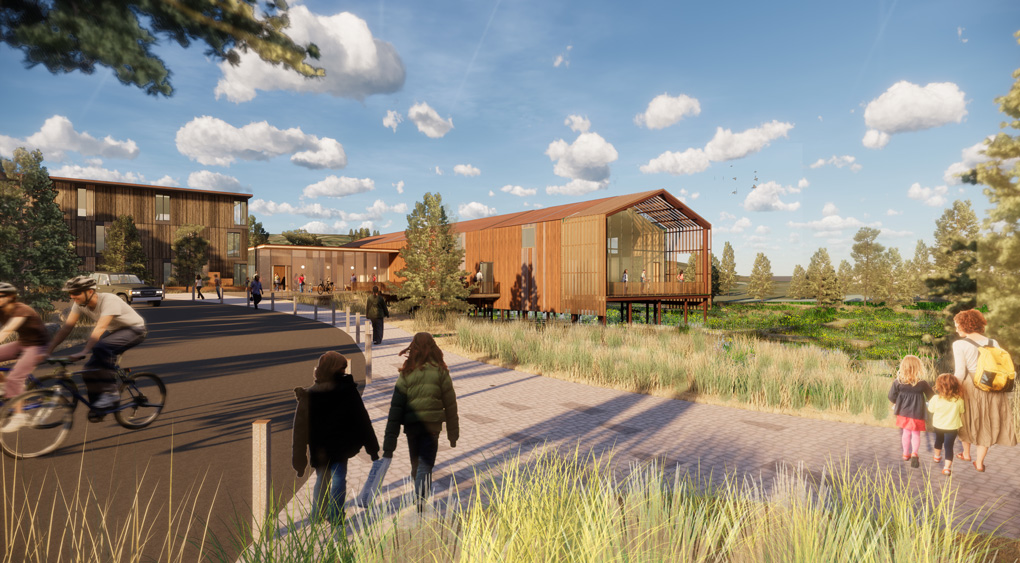Portland Japanese Garden has been recognized by the National American Society of Landscape Architects (ASLA) with the 2020 Award of Excellence in General Design for the Cultural Crossing Project. This is the highest honor of ASLA’s professional design awards program, where each year, award recipients represent the best in landscape architecture from around the globe.
The Cultural Crossing Project’s landscape architects, Walker Macy and Portland Japanese Garden Garden Curator, Sadafumi Uchiyama, worked together within a highly collaborative, multicultural, and multiskilled team that included Kengo Kuma Associates, Hacker Architects, KPFF Consulting Engineers, Hoffman Construction, and a team of skilled landscape gardening craftspeople. The Award of Excellence recognizes the project’s beautifully executed details; the team’s cohesive, place-based and landscape-led design approach; the interweaving of design excellence and technical problem-solving; and the team’s articulate balance between traditional Japanese and contemporary design and construction methodologies.
Portland Japanese Garden’s Cultural Crossing expanded the existing Garden, known as one of the most authentic outside Japan. The transformation created a rich, continuous visitor experience, from a more formal and inviting new entry that welcomed visitors at the base of the hill to a pedestrian path ascending through a forested ravine, culminating in the Cultural Village above. The design process for the Cultural Village took the immersive, contemplative experiences of its varied garden spaces and augmented them to offer a world-class setting for intercultural exchange and promotion of Japanese traditional arts and culture. Inspired by the forested, hilltop setting of the gardens, the Cultural Village emphasized strong indoor-outdoor relationships that created a feeling of permeability and interconnectedness immersing visitors in the garden context, with spaces that are adaptable for indoor-outdoor cultural events and classes.
The landscape architectural design solved significant geological, water management, forest quality, and accessibility problems, resulting in a resilient future for the Garden – all while preserving Japanese gardening and aesthetic principles. For example, to address geotechnical challenges, a green infrastructure system was created through a stone creek bed, which runs from the top of the hillside all the way down to the parking lot, channeling and filtering water runoff down the hill into a nearly 27,000 gallon holding tank, where the water is slowly released into the city’s storm water system. The ephemeral journey of the water runoff parallels that of the entryway path, offering bridges to cross, and seamlessly connecting the entire site together with the element of water.


